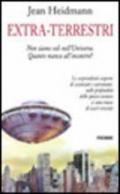
ORIGINS
Eales Stephen
In the last decade, there has been a revolution in observational astronomy, which has meant that we are very close to answering three of the four big 'origin questions', of how the planets, stars, galaxies, and the universe itself were formed. As recently as 1995 we knew of only one planetary system: our own. Now we know of over a hundred, and this knowledge has helped to reveal how planetary systems form. In this same decade, new types of telescope have allowed us to penetrate through clouds of interstellar dust to see the first moments in the life of a star, and also to see directly (not infer) what galaxies looked like thirteen billion years ago, only a billion years after the Big Bang. Because of this new knowledge, we now have provisional answers to the second and third origin question. The final question is the one we can't yet answer, but even here there have been big steps towards an answer. Within the last four years, astronomers have discovered that the universe is geometrically flat and that its expansion is accelerating, fuelled by a mysterious dark energy. This revolution in our observational knowledge of the universe - including the first precise measurements of its age and matter and energy content - has been vital groundwork for new ideas about its origin, including the possibility that the universe originated in a larger `meta-universe'. Origin Questions describes, at an understandable and basically non-mathematical level, the origin questions and the recent steps that have been taken towards answering them. TOC:Introduction.- Origins Part 1: Planets.- Chapter 1: Rocks.- Chapter 2: Exoplanets.- Chapter 3: The Day the Solar System Lost a Planet.- Origins Part 2: Stars.- Chapter 4: Ends.- Chapter 5: Beginnings.- Origins Part 3: Galaxies.- Chapter 6: Silent Movie.- Chapter 7: The History of Galaxies.- Origins Part 4: The Universe.- Chapter 8: Watching the Big Bang on Television.- Chapter 9: What Happened Before the Big Bang?- Further Reading.
Al momento non disponibile, ordinabile in 3 settimane circa
Dettagli Libro
- Titolo: ORIGINS
- Autore: Eales Stephen
- Curatore:
- Traduttore:
- Illustratore:
- Editore: SPRINGER VERLAG
- Collana: ASTRONOMERS' UNIVERSE
- Data di Pubblicazione: 2006
- Pagine: 284
- Formato:
- ISBN: 9781846284014
- Non catalogati - Non catalogati
Libri che ti potrebbero interessare

Le fotografie di Von Gloeden
G. Parise, Marina Miraglia, Goffredo Parise, Wilhelm von Gloeden, Italo Mussa

Fotografie
Nadar Félix

Atlante delle piante medicinali
A. Lomazzi, Ingrid Schonfelder, M. Pandolfi, Peter Schonfelder

Atlante delle razze canine
M. Barbieri, I. Korman, Christine Adrian

Le piante da appartamento
John Brookes

Piante da appartamento
aa.vv.

Gambe belle, sode e snelle in sole 6 set...
C. Prasso Res, Felix Schmitt, Cynthia Tivers, Cristina Prasso Res

Ostriche, seppie e altre delizie
Sergio Angeletti

Tutti i metodi di rilassamento
Bernard Auriol, Daniela Garavini

Auto-lifting
Lidia Perria, Camille Volaire

Extra-terrestri. Noi siamo soli nell'uni...
Jean Heidmann

Alla ricerca dei tesori sommersi. Carich...
Wright John






